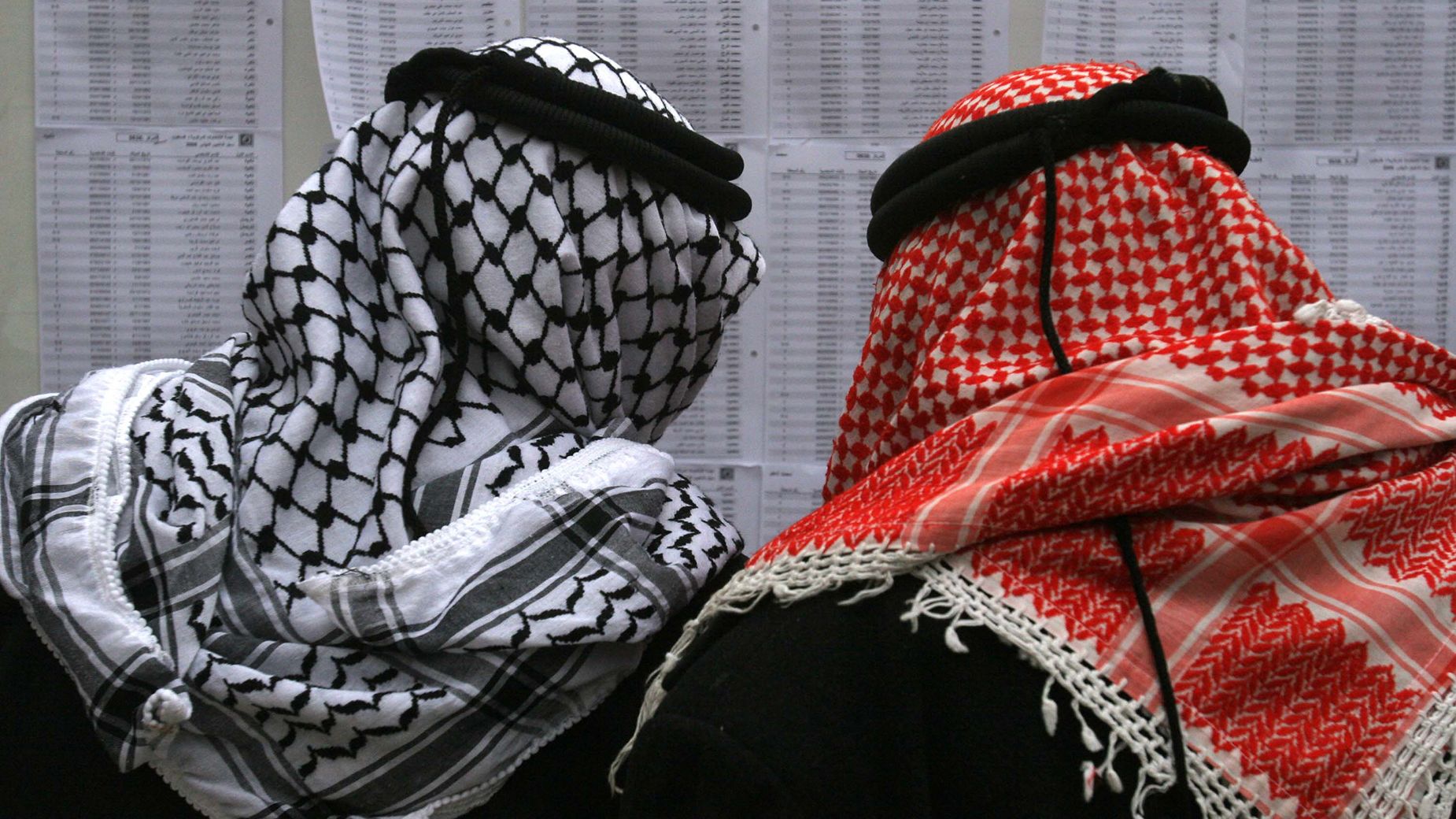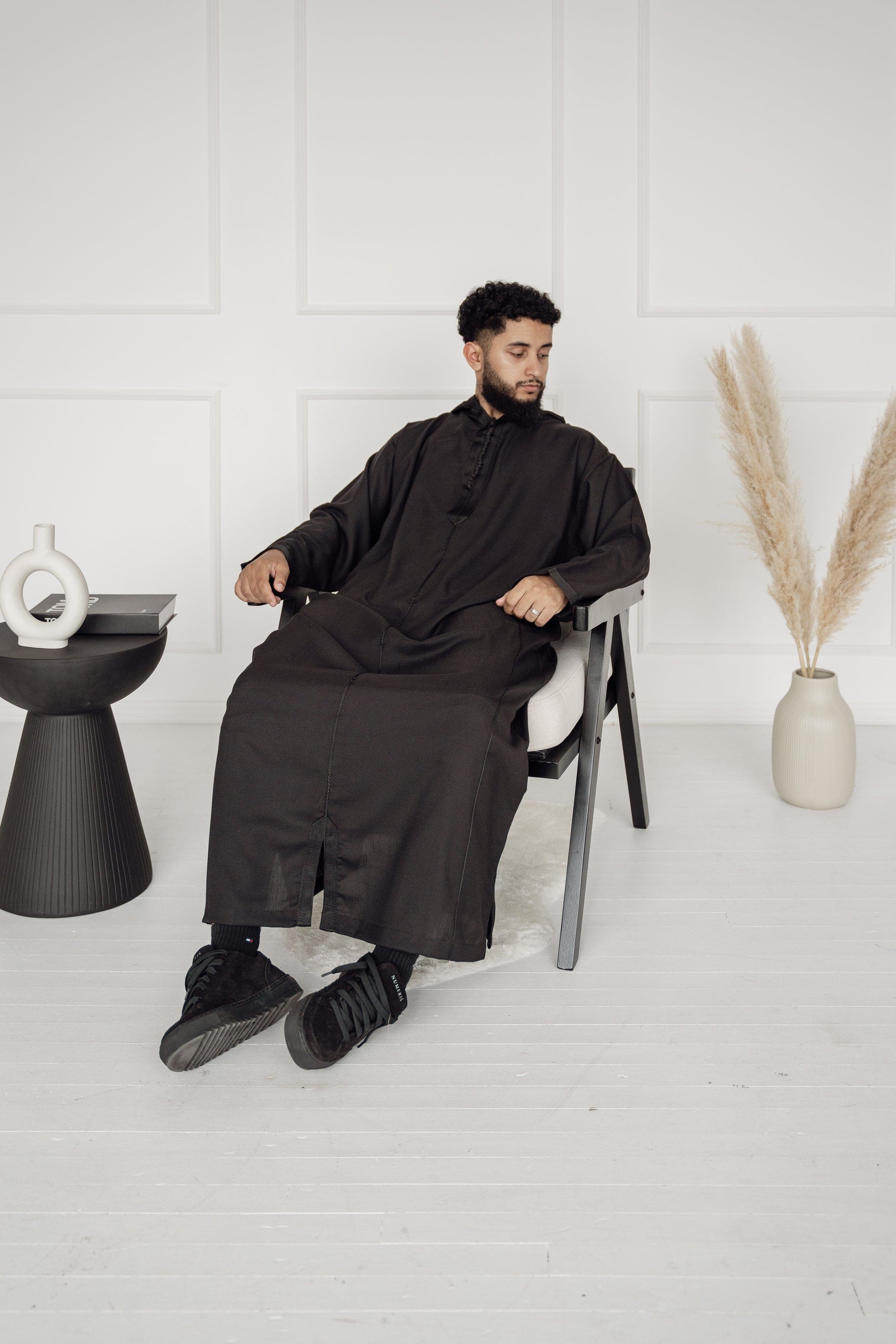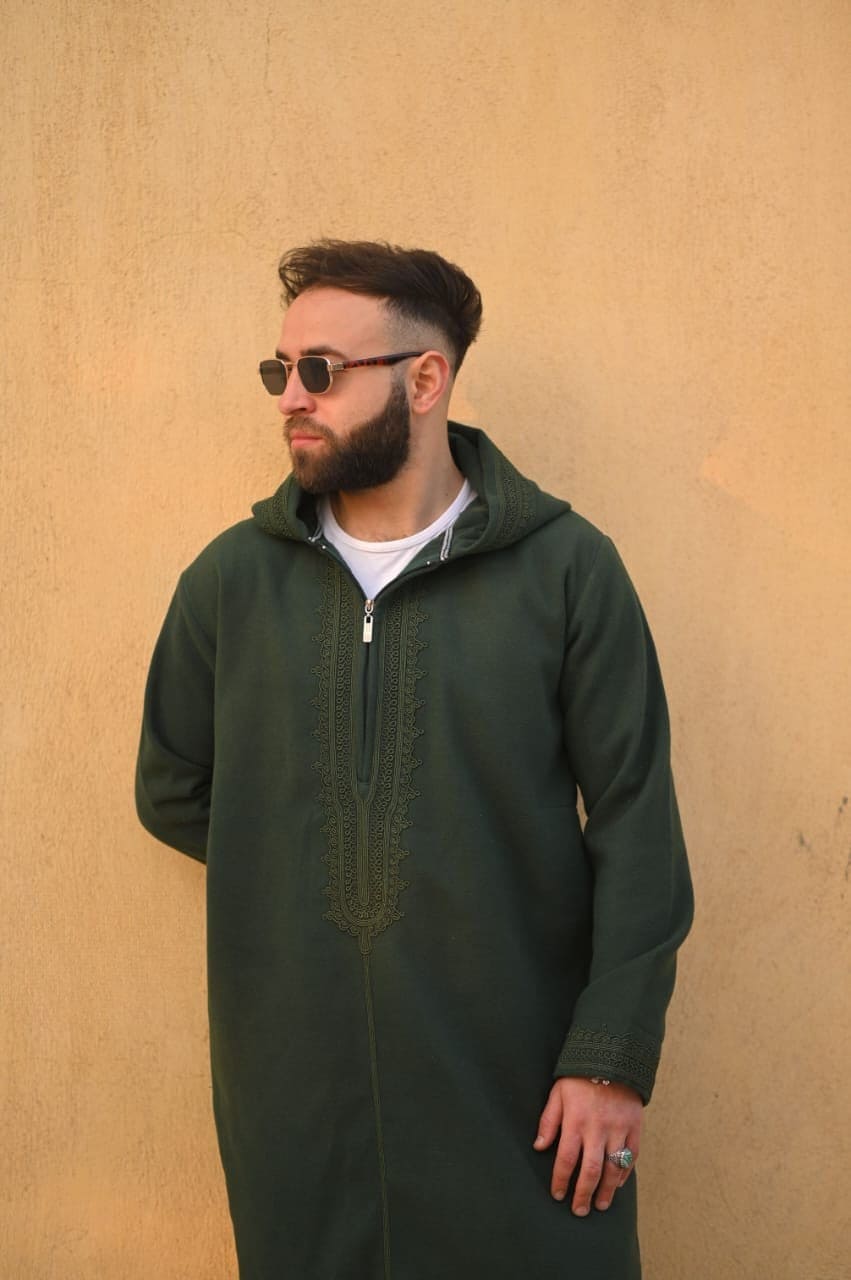This is one of the most common questions people ask about the Palestinian keffiyeh, and it's an important one. The short answer is: Yes, non-Palestinians can wear the keffiyeh, but it comes with responsibility. The key difference lies in whether you're wearing it as an act of genuine solidarity or as a thoughtless fashion trend.
Let's break down when wearing a keffiyeh is appropriate, when it crosses into cultural appropriation, and how to wear it respectfully as a non-Palestinian ally.
The Difference Between Solidarity and Appropriation
Wearing it as Solidarity (Appropriate)
When you wear a Palestinian keffiyeh as an act of political solidarity, you're participating in a long tradition of international support for Palestinian liberation. This is not only acceptable but welcomed by many Palestinians.
What solidarity looks like:
- You understand the keffiyeh's history and symbolism
- You're actively supporting Palestinian rights and liberation
- You buy authentic keffiyehs from Palestinian manufacturers
- You're prepared to speak about why you're wearing it
- You center Palestinian voices and experiences
- You wear it to protests, demonstrations, and solidarity actions
- You use it as a conversation starter to educate others about Palestine
Example: Attending a protest for Palestinian rights while wearing an authentic Palestinian keffiyeh, and being ready to explain its significance to anyone who asks.
Wearing it as Appropriation (Problematic)
Cultural appropriation happens when you take a symbol from an oppressed culture, strip it of its meaning, and use it for personal benefit without understanding or supporting the people it belongs to.
What appropriation looks like:
- Wearing it purely as a fashion accessory or "aesthetic"
- Buying cheap mass-produced knockoffs from fast fashion brands
- Being unable or unwilling to explain its significance
- Wearing it while remaining silent on Palestinian issues
- Using it for photo ops without context
- Profiting from the design without supporting Palestinians
- Wearing it while supporting policies that harm Palestinians
Example: A fashion influencer wearing a designer "inspired by" keffiyeh pattern for Instagram photos without mentioning Palestine or understanding what it represents.
What Palestinians Say About Non-Palestinians Wearing the Keffiyeh
Palestinian voices should guide this conversation. Many Palestinians have spoken directly about non-Palestinians wearing the keffiyeh:
The Consensus: Most Palestinians welcome non-Palestinians wearing the keffiyeh when it's done in genuine solidarity. The keffiyeh has long been adopted by international activists and solidarity movements, and this is generally seen as positive.
Key Palestinian perspectives:
"Wear it with knowledge and purpose." Palestinians want people to understand what they're wearing. It's not about looking cool; it's about standing with an oppressed people.
"Support our manufacturers." When you buy from Palestinian sources or retailers who stock authentic Palestinian-made keffiyehs, you're directly supporting Palestinian livelihoods and preserving endangered cultural traditions.
"Don't wear our symbol while staying silent." The keffiyeh is inherently political. If you wear it but refuse to speak up for Palestinian rights, that's hollow performative allyship.
"Learn our history first." Before wrapping a keffiyeh around your neck, learn about the Nakba, the ongoing occupation, the right of return, and current Palestinian resistance.
When It's Appropriate for Non-Palestinians to Wear a Keffiyeh
1. At Protests and Demonstrations
Wearing the keffiyeh at protests for Palestinian rights is one of the most appropriate contexts. It shows visible solidarity and helps create a powerful collective image of international support.
Why it works: You're actively participating in the struggle for Palestinian liberation. The keffiyeh becomes part of your political action, not just decoration.
2. Solidarity Events and Cultural Programs
Palestinian cultural events, fundraisers, educational programs, and community gatherings often welcome allies wearing keffiyehs.
Why it works: You're in a space centered on Palestinian voices and supporting Palestinian-led initiatives.
3. Daily Wear as Political Statement
Some allies wear the keffiyeh daily as a consistent political statement and conversation starter about Palestinian rights.
Why it works: If you're ready to explain it, educate others, and back up your symbol with action, daily wear can be powerful. But you must be prepared for the responsibility that comes with it.
4. In Solidarity Organizations and Activist Spaces
If you're part of Palestine solidarity groups, BDS campaigns, or human rights organizations working on Palestinian issues, wearing the keffiyeh signals your commitment.
Why it works: You're actively working for Palestinian liberation, and the keffiyeh represents your genuine involvement in the cause.
When It's NOT Appropriate
1. As a Fashion Trend Without Context
Wearing it because it "looks cool" or matches your outfit without understanding or caring about Palestine is appropriation.
Why it's problematic: You're using a symbol of oppressed people's resistance as a costume while they continue to suffer.
2. Buying From Corporations That Exploit the Design
When luxury fashion brands like Louis Vuitton sell $700 "keffiyeh-inspired" scarves that don't support Palestinians and strip away the political meaning, buying and wearing these is appropriation.
Why it's problematic: You're enriching corporations while Palestinian manufacturers struggle to survive. You're participating in the commodification of Palestinian resistance.
3. While Supporting Anti-Palestinian Positions
You cannot wear a keffiyeh while simultaneously supporting Israeli occupation, settlement expansion, or policies that harm Palestinians. The symbol and the stance are incompatible.
Why it's problematic: This is ultimate hypocrisy. The keffiyeh represents Palestinian liberation; you can't wear it while opposing that liberation.
4. For Halloween or Costume Parties
The keffiyeh is not a costume. It's a symbol of real people's struggle for survival, freedom, and dignity.
Why it's problematic: Treating someone's resistance symbol as a party prop is deeply disrespectful and dehumanizing.
How Non-Palestinians Should Wear the Keffiyeh Respectfully
If you've decided to wear a keffiyeh in solidarity, follow these guidelines:
1. Educate Yourself First
Learn:
- The history of Palestinian displacement (the Nakba of 1948)
- The current reality of occupation and apartheid
- The meaning and symbolism of the keffiyeh itself
- Key Palestinian voices, writers, and activists
- The BDS (Boycott, Divestment, Sanctions) movement
- Palestinian resistance movements and their goals
Resources:
- Read books by Palestinian authors (Rashid Khalidi, Noura Erakat, Susan Abulhawa)
- Follow Palestinian journalists and activists on social media
- Watch documentaries about Palestinian history
- Listen to Palestinian podcasts and voices
2. Buy Authentic Palestinian Keffiyehs
Support Palestinian manufacturers and ethical retailers:
- Seek out Palestinian-made keffiyehs
- Buy from Palestinian-owned shops and cooperatives
- Choose fair trade organizations working with Palestinian artisans
- Look for retailers who verify their keffiyehs are made in Palestine
Avoid:
- Chinese mass-produced knockoffs
- Fast fashion brands appropriating the design
- Luxury designers selling $700+ versions
- Any retailer that can't verify Palestinian origin
Why it matters: Every authentic keffiyeh you buy supports Palestinian workers, preserves endangered traditions, and puts money directly into Palestinian communities rather than corporations exploiting their symbol.
3. Be Ready to Explain Why You're Wearing It
People will ask. They should ask. Be prepared with a thoughtful answer.
Good responses:
- "I wear it in solidarity with the Palestinian people's struggle for freedom and self-determination."
- "This is a Palestinian keffiyeh. It's a symbol of resistance against occupation and displacement. I wear it to show my support for Palestinian liberation."
- "I bought this from a retailer that stocks authentic Palestinian-made keffiyehs to support their community and to make visible my commitment to Palestinian rights."
Poor responses:
- "I just think it looks cool."
- "I don't know, I just like the pattern."
- "It's just a scarf."
4. Take Concrete Actions Beyond Wearing the Symbol
Wearing a keffiyeh isn't enough. It must be backed by real action and support.
Actions to take:
- Participate in BDS campaigns
- Attend protests and demonstrations
- Donate to Palestinian relief organizations
- Amplify Palestinian voices on social media
- Contact elected officials about Palestinian rights
- Educate others about the Palestinian struggle
- Support Palestinian artists, writers, and businesses
- Join Palestine solidarity organizations in your area
Remember: The keffiyeh should represent your activism, not replace it.
5. Center Palestinian Voices, Not Your Own
As a non-Palestinian ally, your role is to support and amplify, not to lead or speak over Palestinians.
Do:
- Share Palestinian perspectives and content
- Defer to Palestinian leadership in movements
- Listen when Palestinians give feedback
- Direct people to Palestinian sources
- Use your privilege to create space for Palestinian voices
Don't:
- Claim to understand the Palestinian experience better than Palestinians
- Make yourself the center of Palestine solidarity work
- Speak for Palestinians or interpret their struggle
- Take credit for Palestinian resistance
- Ignore Palestinian criticism or feedback
6. Understand the Political Commitment You're Making
Wearing a keffiyeh is a political statement. Accept that this comes with consequences.
Be prepared for:
- Heated political discussions
- Criticism from pro-Israel advocates
- Questions about your stance on complex issues
- Potential social or professional pushback
- Having to defend your position
If you're not ready for these conversations, don't wear the keffiyeh. The symbol demands courage to match its meaning.
Special Considerations for Different Contexts
At Work or School
Some workplaces or schools may have policies about political symbols. Know your rights and the potential consequences.
Consider:
- Whether wearing it could put your job at risk
- If your workplace allows political expression
- Whether you're willing to have difficult conversations with colleagues
- How it might affect your professional relationships
Note: Your safety and livelihood matter. There's no shame in choosing not to wear it in certain contexts if the consequences are severe. Solidarity takes many forms.
In Areas With Large Palestinian Communities
If you live in or visit areas with significant Palestinian populations, wearing the keffiyeh can be a sign of solidarity that's often appreciated.
Best practices:
- Be extra respectful and knowledgeable
- Support Palestinian businesses in these areas
- Attend community events and programs
- Build genuine relationships with Palestinian people
While Traveling
Wearing a keffiyeh while traveling, especially in the Middle East, can have different meanings in different contexts.
Considerations:
- In Palestine: Generally welcomed as a sign of solidarity
- In other Arab countries: Often seen positively, but understand local context
- In Israel: May result in harassment or discrimination
- In Western countries: Political statement that may spark debate
Common Questions and Concerns
"Won't I Be Accused of Antisemitism?"
Supporting Palestinian rights and opposing Israeli occupation is not antisemitic. The keffiyeh represents Palestinian liberation, not hatred of Jewish people.
Many Jewish people wear the keffiyeh in solidarity with Palestine and oppose Israeli policies. Conflating criticism of Israel with antisemitism is a tactic used to silence Palestinian solidarity.
Stand firm: You can oppose antisemitism and support Palestinian rights. These positions are not contradictory.
"What If I Don't Know Enough Yet?"
If you don't feel informed enough, that's honest self-awareness. Don't wear it yet. Take time to learn first.
Steps to take:
- Educate yourself thoroughly about Palestine
- Follow Palestinian voices and sources
- Read books and watch documentaries
- Engage with Palestinian solidarity organizations
- When you feel ready, purchase an authentic keffiyeh
- Wear it with confidence and knowledge
"Can I Wear It If I Disagree With Some Palestinian Tactics?"
Supporting Palestinian liberation doesn't mean you must agree with every tactic or every faction. The keffiyeh represents the broader struggle for Palestinian freedom and self-determination.
What matters:
- You support Palestinian rights fundamentally
- You oppose occupation and displacement
- You believe in Palestinian self-determination
- You're committed to justice for Palestinians
You can hold these positions while having complex feelings about specific tactics or groups.
"What If Someone Challenges Me?"
Good. That means the keffiyeh is doing its job as a conversation starter.
How to respond:
- Stay calm and respectful
- Explain your support for Palestinian rights
- Share facts about the history and current situation
- Listen to their perspective
- Don't get defensive
- Offer to share resources for them to learn more
Remember: You're representing Palestinian solidarity. Respond with the dignity and steadfastness that Palestinians themselves show.
The Deeper Meaning of Wearing the Keffiyeh
When a non-Palestinian wears a keffiyeh in genuine solidarity, it becomes part of a powerful tradition of international support for liberation movements.
Historical context: Throughout history, oppressed peoples' symbols have been adopted by international solidarity movements:
- The raised fist of Black Power
- The red bandana of Latin American resistance
- The beret of revolutionary movements
- Nelson Mandela's Madiba shirts
The Palestinian keffiyeh fits into this tradition. It's a symbol that transcends borders to represent the universal human struggle against oppression, colonization, and injustice.
What it means to wear it:
- You recognize Palestinian humanity and rights
- You stand against settler colonialism everywhere
- You believe in the right of all peoples to self-determination
- You're willing to be visible in your support
- You understand that liberation struggles are interconnected
Where to Find Authentic Palestinian Keffiyehs
When you're ready to purchase your keffiyeh, authenticity matters. Look for retailers who:
Verify Palestinian origin: The keffiyeh should be made in Palestine by Palestinian manufacturers Support Palestinian communities: Your purchase should benefit Palestinian workers and artisans Provide transparency: Ethical retailers will clearly state where their keffiyehs come from Offer fair pricing: Authentic Palestinian keffiyehs typically range from $15 to $40
NewArabia stocks authentic Palestinian keffiyehs that support Palestinian manufacturers and communities. By choosing retailers like NewArabia that prioritize authenticity and ethical sourcing, you ensure your purchase makes a meaningful difference.
Final Answer: Yes, You Can Wear It. But Do It Right.
Non-Palestinians can absolutely wear the keffiyeh. In fact, international solidarity is crucial to Palestinian liberation. Your visible support matters.
But wearing it comes with non-negotiable responsibilities:
✅ Learn Palestinian history and current reality ✅ Buy authentic Palestinian-made keffiyehs ✅ Be ready to explain its significance ✅ Take concrete actions for Palestinian rights ✅ Center Palestinian voices, not your own ✅ Wear it as political commitment, not fashion ✅ Accept the conversations and consequences that come with it
If you can commit to these responsibilities, then yes, wrap that keffiyeh around your neck with pride. Wear it to protests. Wear it in solidarity. Wear it as a daily reminder of your commitment to justice.
But if you just think it "looks cool" or want it for aesthetic reasons without understanding or supporting Palestine, then no. Leave it for those who understand what it represents.
The keffiyeh is a symbol of resistance, resilience, and the unbreakable connection between Palestinians and their land. Wear it with purpose. Wear it with respect. Wear it in genuine solidarity.
Palestine will be free. And allies wearing keffiyehs will be part of that journey.



